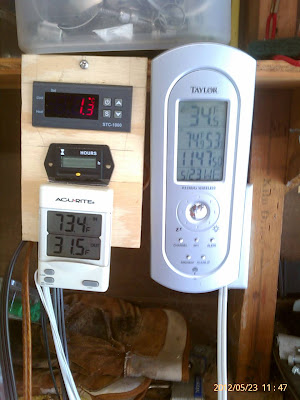FF
Guru
- Joined
- Oct 12, 2007
- Messages
- 22,552
It seems that would be more efficient than just dumping hot air into the cabin (or more typically, behind the cabinets).
More efficient in this case does not mean lower run time , it just keeps perhaps unwanted heat out of the locker where the compressor package is.
Refrigerant needs to be cooled only so much after being pumped into a liquid , air or water does it.
Downside to water cooled is the time spend on the hard ,in a boat yard, sans refrigeration.
FF
More efficient in this case does not mean lower run time , it just keeps perhaps unwanted heat out of the locker where the compressor package is.
Refrigerant needs to be cooled only so much after being pumped into a liquid , air or water does it.
Downside to water cooled is the time spend on the hard ,in a boat yard, sans refrigeration.
FF




